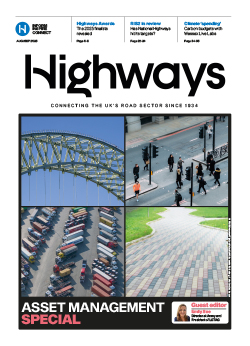National Highways is considering bringing in new road marking profiles to raise the audible impact of crossing centre lines, as part of wider updates to the markings sector.
The profile would be targeted at single carriageway roads, which have some of the worst risk factors on the network, notably the danger of cars being involved in head-on collisions due to crossing the centre line.
The national operator has been discussing the possibility of new profiles with the Road Safety Markings Association (RSMA) and highlighted this ongoing work at its national conference this month.
Dr Joanna White, research, development and innovation director at National Highways, told delegates: 'We are exploring opportunities for new road marking profiles, which could potentially provide an increased audible effect when the vehicles cross them.
'If viable this could provide additional benefits for use as a centreline marking on single carriageways, helping to deliver our vision that no one should be killed or seriously injured on our roads. My team have had some initial discussions with the RSMA and we look forward to continuing to explore what might be achievable.'
National Highways is also carrying out wider updates to specifications and standards in the road markings and road studs area as part of its renewal of the Manual of Contract Documents for Highway Works (MCHW) this year.
Highways covered the update to the MCHW in its latest (January/February) issue, noting that the new version is expected around July.
The Government-owned company has reviewed and is updating Series 1200 (Traffic Signs) of the MCHW, which covers road markings and road studs.
The proposed updates will bring the specification in line 'with current British standards and working practices while also striving for greater durability and quality', Dr White said.
She added: 'To complement the changes to Series 1200, new documents are also being developed which will provide advice or requirements covering the design of temporary and permanent road markings.
'We have also started a review of our standard CS126, which covers the inspection and assessment of road markings and road studs. Our aim is to align the inspection and assessment process and requirements with the updated specification and publish a revised version alongside the new MCHW during 2025.'
Dr White concluded her presentation at the event by noting that 'any new road safety marking product requires testing and certification and I know that the RSMA and my team have for a number of years been investigating the possibility of establishing a new certification site for the UK'.
Real-world testing of new products on the strategic road network has been a major aim of the RSMA for several years but so far negotiations with National Highways have been unable to lock down arrangements that satisfy both sides.
'Whilst there have been obstacles there is still a desire in my team to identify a solution and I know the RSMA are also still keen to work with us. I am hopeful that we will see some results in this area soon,' Dr White said.






